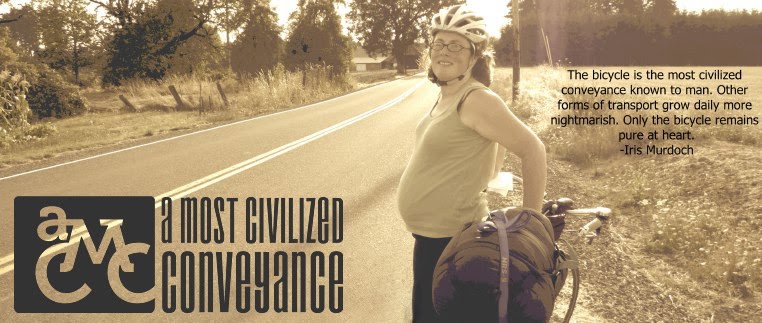On the trips I've taken where I planned to travel by bike, I've made a point of securing the relevant bike map for the area: the ADC map for the Washington D. C. area and the Chicago municipal bike map allowed me to take work trips to those places and commute reliably by bike.
But lately I've been lax about getting paper maps. I can look up where I'm going online, and have taken to travelling with lists of turn-by-turn directions for the places I need to get to, rather than with full maps of the places where I am.
This strategy is inferior for both practical and philosophical reasons. Practical, because sometimes the point-to-point directions are inadequate. Streets often close, my transcription is often imperfect, and Google has the unfortunate habit of, say, claiming that streets go through where they don't. Plus, there is always the possibility of catastrophic user error, as was the case in Tacoma, where we searched for directions to Union Station rather than the Tacoma Amtrak Station, not realizing that the former was a historic building now used as a courthouse, and more than a mile from the station with, you know, trains.
Without a map, finding work-arounds is clumsy, slow, and more dangerous than it needs to be, leading us to choose obvious and clearly-signed auto-centric arterials over what are probably more bike-friendly streets just a few blocks away.
But there is a loss beyond the practical, a whole realm of experience that disappears with the paper map. When I get a new paper map, I spread it out on a bed or table, taking it all in at once. I see what sorts of networks are available: are there off-street paths, bike lanes, traffic-calmed streets? Is the biking infrastructure designed for someone moving fast or slow, more like a car or more like a pedestrian? It allows me to contemplate not only where I have to go, but also where I might like to go. It allows me to note landmarks and geography, as well as get a sense of how frequently I can expect to find a bike shop if I need one.
I am glad that there are online resources like the various online municipal bike maps, the excellent bycycle.org, the user-generated routes at mapmyride.com and bikely.com, and, bugs aside, the new bicycling directions at maps.google.com. But I need to return to the habit of doing what I can to secure proper paper maps. They make travel safer, more efficient, and fundamentally more rich. And I miss them.

3 comments:
I love maps. And I loved them before I majored in Geography.
I still have my most of my maps from a transcontinental ride back in 1977. Paper maps provide a form of memory, one of the maps has phone numbers and addresses on it of people we met along the way, another is badly torn where the wind and a barbed wire fence in the Dakotas got a hold of it, etc.
I do use hand held electronics today, but they are only a quick and dirty method of working my way out of somewhere. I still much prefer the paper maps.
Aaron
I love my paper maps... but I spend so much time lost. I spent over half of my 100 km ride this weekend lost. It was good but... (and crib sheets would be impossible in this city.) I am so tempted to buy a Garmin....
but then I won't be prepared for the zombie apocolypse.
sigh.
I want to ride with you.
I want bikey adventures together.
Post a Comment